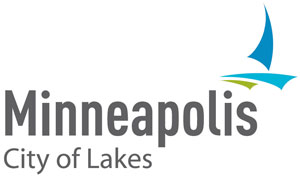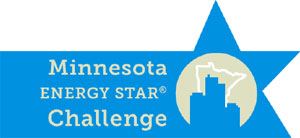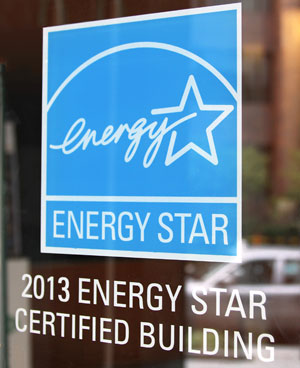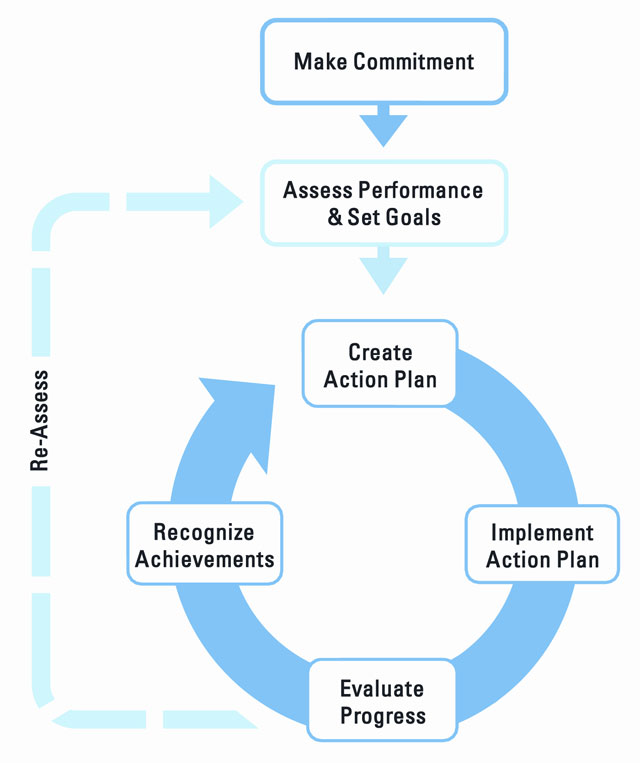ENERGY STAR certification is a nationally recognized symbol of building efficiency. It tells current and potential occupants that owners care about running the building well, being financially prudent, and being environmentally responsible.
There are currently two separate grant opportunities for ENERGY STAR building certification in Minnesota.
- The first is for commercial buildings within the City of Minneapolis who want to pursue certification.
- The second is for the Minnesota ENERGY STAR Challenge, which will work with commercial building owners across the state and also select a community partner to help promote certification in their area.
See below for more details on each opportunity or click here if you’re wondering why certification matters.
Grants for ENERGY STAR Certification in Minneapolis
 Do you have an efficient commercial building? If so, show it! Building energy efficiency is generally hard to see – walls hide insulation and high performing equipment is tucked away. But the City of Minneapolis with the help of the MN Pollution Control Agency wants to change that by helping your building become ENERGY STAR certified.
Do you have an efficient commercial building? If so, show it! Building energy efficiency is generally hard to see – walls hide insulation and high performing equipment is tucked away. But the City of Minneapolis with the help of the MN Pollution Control Agency wants to change that by helping your building become ENERGY STAR certified.
To help your building show off its high efficiency credentials, the City is providing grants to Minneapolis commercial buildings greater than 50,000 sqft in size and with ENERGY STAR scores of at least 75 for certification.
Minnesota ENERGY STAR Challenge
Support for Commercial Building Owners
 Minnesota building owners are being challenged to achieve 20 percent energy savings and to certify 1,000 buildings through the ENERGY STAR program during the next decade as part of the just-announced Minnesota ENERGY STAR Challenge.
Minnesota building owners are being challenged to achieve 20 percent energy savings and to certify 1,000 buildings through the ENERGY STAR program during the next decade as part of the just-announced Minnesota ENERGY STAR Challenge.
The Minnesota ENERGY STAR Challenge is a statewide project organized by the Great Plains Institute (GPI), the U.S. Green Building Council – Minnesota, and the Minnesota Chamber of Commerce Energy Smart program. The Challenge is supported by a grant from the Minnesota Pollution Control Agency and in-kind contributions from several utilities.
The Challenge seeks to lessen environmental impacts that result from excessive energy use in our built environment. Nearly 20 percent of the nation’s total CO2 emissions come from commercial buildings. On average, buildings that are ENERGY STAR certified use 35 percent less energy than comparable buildings, reducing air emissions as well as operating costs.
“Minnesota building owners are embracing energy efficiency and the cost savings that result, but there’s so much more to do,” said GPI President & CEO Rolf Nordstrom, noting that more than 600 commercial buildings in Minnesota are currently ENERGY STAR certified. “In many cases, building energy efficiency investments can be made – and paid for with energy savings achieved – in a relatively short period of time, making those investments a ‘win’ for the environment and a ‘win’ for business owners’ pocket books. You don’t have to look farther than the Science Museum of Minnesota’s recent retrofits to see how large those savings can be!”
Owners of commercial buildings who are interested in participating in the Challenge can now sign up to receive:
- Free education and assistance related to energy benchmarking
- Energy reduction strategies
- National recognition through the federal Environmental Protection Agency (EPA)
Certain qualified buildings may also be eligible for free technical assistance for building upgrades or other measures through the program.
“We look forward to offering our energy consultation and benchmarking services to Minnesota businesses that step up to the challenge,“ said Minnesota Chamber Director of Environment Sustainability Programs Jill Curran, noting that the Energy Smart program is an ENERGY STAR partner having benchmarked numerous buildings that have achieved the ENERGY STAR rating. “This certification is a great way for businesses to show the world that they are walking the energy efficiency talk.”
The Challenge is open to all owners and managers of existing buildings located in the State of Minnesota, with eligible properties. The Challenge will run until January 2017, with recognition in April 2017. More information on the ENERGY STAR challenge can be found at http://www.mnenergystarchallenge.com.
Learn more in the official Challenge press release >>
Minnesota ENERGY STAR Challenge
Community Partner Request for Proposals
The Minnesota ENERGY STAR Challenge invites proposals for a community partner that will work with the Challenge to demonstrate significant energy savings in local commercial buildings and increase the number of ENERGY STAR certified buildings within that community.
- Eligible Applicants: Minnesota city governments, local chambers of commerce, or business associations are eligible applicants. Electric utilities, gas utilities, and county governments are encouraged to participate in proposals as partners.
- Proposal Due Date: October 22, 2015
About the Challenge: ENERGY STAR certified buildings deliver a variety of benefits to local businesses, the local economy and the environment. A growing body of research demonstrates that ENERGY STAR certified buildings on average use 35% less energy than comparable buildings, command higher occupancy rates and rental premiums, and reduce air emissions as well as operating costs. Minnesota Statute 216B.241 establishes a goal of achieving 1,000 ENERGY STAR certified buildings in the state. The goal of the Minnesota ENERGY STAR Challenge is to work toward increasing ENERGY STAR buildings in the state to 1,000 and encourage participants to achieve >20% energy savings over 10 years.
The Challenge will provide resources to help businesses save energy and achieve ENERGY STAR certification, including:
- Free energy assessments and energy benchmarking
- Assistance identifying energy saving projects eligible for rebates and financing
- Incentives to help pay for ENERGY STAR certification of buildings
- Recognition of participants
The Challenge is open to any building that is eligible to achieve an ENERGY STAR score of 1-100 (see the list of building types here). For the purpose of this RFP, communities are encouraged to consider an emphasis on high energy use, private sector commercial buildings such as hospitals, medical offices, hotels, supermarkets and bank branches.
The Challenge is a joint project of the Great Plains Institute, the U.S. Green Building Council – Minnesota, and the Minnesota Chamber of Commerce’s Energy Smart program. The Challenge is supported by a grant from the Minnesota Pollution Control Agency and in-kind contributions from several utilities.
Benefits of Participation & ENERGY STAR Challenge Commitment to the Selected Community:
The Minnesota ENERGY STAR Challenge partners will provide targeted technical assistance and incentives to eligible building owners and managers in the selected partner community. At a minimum this will include:
- Free energy benchmarking assistance for at least 30 buildings
- Free on-site energy assessments for at least 15 buildings, along with information about rebates and financing for energy-saving projects
- Free assistance in pursuing ENERGY STAR certification for eligible businesses
- Outreach assistance to increase participation
- $5,000 available (up to $500 cost match per building) to support the cost of PE verification for ENERGY STAR building certification, on a first come first serve basis
- Tracking participation metrics and documenting the local results of the Challenge
The Minnesota ENERGY STAR Challenge will further work with the community partner to convene a team of local stakeholders that guide and assist with local implementation including:
- Setting relevant local goals for the project
- Developing a plan to engage local building owners and tenants
- Conducting outreach through their local networks
- Recognizing local participants and their accomplishments
Why get ENERGY STAR certification?
Top 10 reasons from ENERGY STAR:
 1. Lower operating costs: Once in operation, ENERGY STAR certified buildings use, on average, 35 percent less energy than similar buildings nationwide. The cost savings can be substantial. For example, ENERGY STAR certified office buildings cost $0.50 less per square foot to operate than their peers. In 2014, ENERGY STAR certified buildings saved $1.4 billion, or an average of nearly $200,000 per building.
1. Lower operating costs: Once in operation, ENERGY STAR certified buildings use, on average, 35 percent less energy than similar buildings nationwide. The cost savings can be substantial. For example, ENERGY STAR certified office buildings cost $0.50 less per square foot to operate than their peers. In 2014, ENERGY STAR certified buildings saved $1.4 billion, or an average of nearly $200,000 per building.
2. More marketable: In an era when fears of “greenwashing” abound, cut through the clutter with ENERGY STAR, the most trusted environmental label in the United States. More than 85 percent of Americans recognize it when they see it. And ENERGY STAR is the only energy efficiency certification that is based on actual, verified energy performance, making your buildings all the more attractive to potential buyers and lessees who want guaranteed savings.
3. Reduced greenhouse gas emissions: Because ENERGY STAR certified buildings are verified to use 35 percent less energy, on average, than similar buildings, they can also be verified to contribute 35 percent fewer greenhouse gas emissions to our atmosphere. By earning the ENERGY STAR, you’re joining the front lines in the fight against climate change.
4. Lease to federal tenants: If you want to lease your space to a federal tenant, your buildings must be ENERGY STAR certified. (Executive Order 13514 mandates that Federal Agencies may only lease space in ENERGY STAR certified buildings.)
5. Higher rental rates: According to a CoStar Group study, rental rates in ENERGY STAR certified buildings are $2.40 per square foot higher than similar buildings. The same CoStar Group study found occupancy rates to be 3.6 percent higher in ENERGY STAR certified buildings when compared to similar buildings.
6. Increased asset value: Reliably persistent energy performance makes it more likely that the higher net operating income from energy cost savings will be recognized through higher building valuation. Experienced managers of large portfolios of ENERGY STAR certified buildings interviewed for one study confirm that ENERGY STAR helps increase building value.
7. Manage risk when developing properties: Are you developing commercial real estate? Achieving Designed to Earn the ENERGY STAR for your building designs can help mitigate risks to profitability by validating assumptions made during the development appraisal, such as operating costs, rents, asset value, and occupancy. Additionally, some jurisdictions allow expedited permitting, review, processing, and inspections to projects that have been designed to earn the ENERGY STAR.
8. Hedge against future mandates: Numerous cities and states have passed legislation containing energy efficiency mandates for commercial new construction projects and existing buildings. The vast majority of them incorporate ENERGY STAR and Designed to Earn the ENERGY STAR. The trend is growing every year as more and more cities and states look for ways to reduce costs and emissions. By earning the ENERGY STAR now, you’re in a better position to respond to any future laws or mandates that come your way. See the list of legislation and campaigns leveraging ENERGY STAR.
9. No cost: All of EPA’s tools and resources, including Portfolio Manager and Target Finder, are free to use. So you can spend your budget on finding other ways to save, rather than on a third-party program.
10. It’s just the right thing to do: Americans are big believers in doing the right thing, and they expect the same of the professionals in their communities. Sixty-eight percent of adults like to do business with companies that are environmentally responsible. More than 80 percent of workers are attracted by an employer with an environmental reputation. And about half of workers said they would forgo higher pay or a promotion to work for an organization with a good reputation.
There’s a documented process to follow for certification:

You’re not alone—there are lots of people getting certified:



